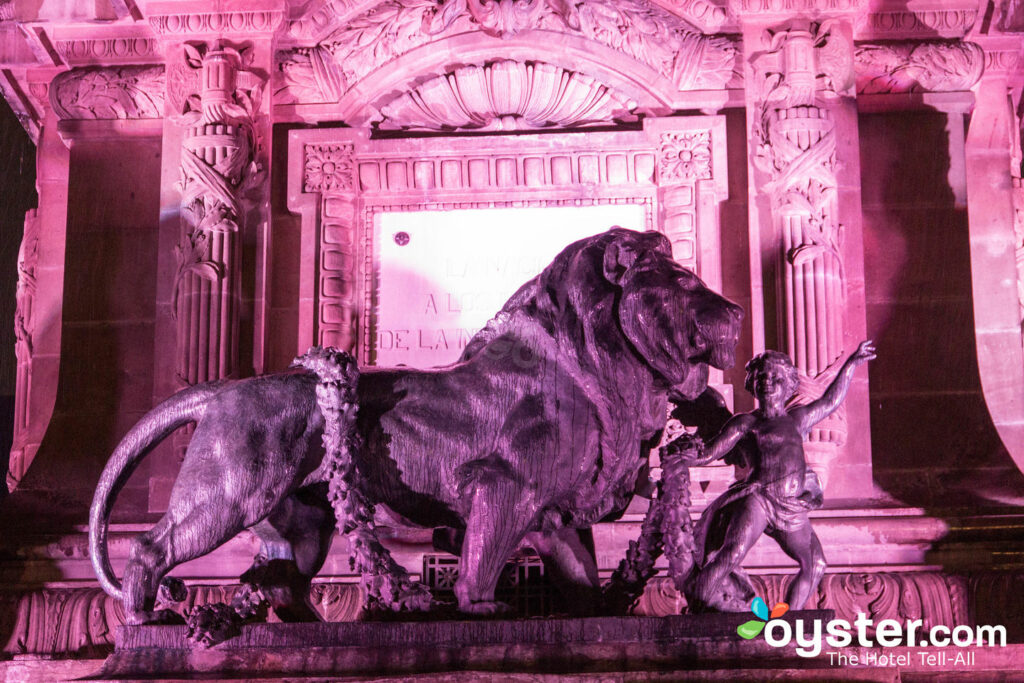
We aren’t breaking any ground when we tell you that Mexico City is one of the world’s coolest, most vibrant, creative, and energetic cities. It’s home to some legendary food and the art scene here arguably rivals New York or London. The sprawling metropolis is made up of several hundred colonias (neighborhoods), and the population of greater Mexico City soars over 20 million. Those facts alone can make tackling this fascinating city a daunting challenge, but we promise that it’s far more manageable than you might think. Whether you have a five days or a full week, there’s more than enough to keep any traveler busy here. To help narrow things down, we’ve put together the ultimate itinerary for what to do and see in this enigmatic city.
Day 1: Hop From Boutiques to Galleries to Cafes in Roma and Juarez
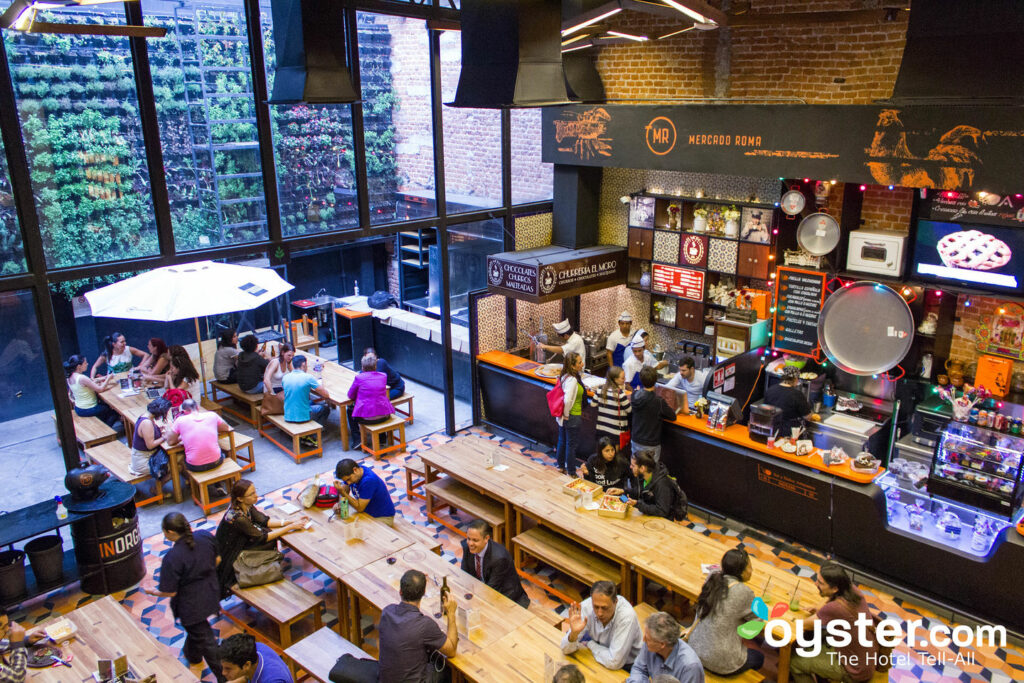
If you’ve timed it right, your first day here will be on a weekend. That’s when Roma and Juarez, two adjacent neighborhoods, are alive with trend-setters grabbing brunch, shopping at pop-up markets, sipping coffees in hipster cafes, and dropping pesos at exclusive boutiques. Do Roma and Juarez scream “Mexico”? Absolutely not. But they do provide a leafy and relatively tranquil introduction to the city. We suggest starting your day at popular spots like Lalo, Delirio, or Cafebreria El Pendulo to fuel up for lots of walking.
Roma is one of Mexico City’s original “it” neighborhoods. Here, and in neighboring Juarez, you’ll find some of Mexico City’s most reputed art galleries (just keep in mind that many aren’t open on Sundays). We suggest stopping by heavy-hitters like Proyectos Monclova, Arredondo\Arozarena, Galería OMR, and Marso Galería.
After a few hours of gallery hopping, do a little damage to your wallet. One-of-a-kind boutiques line streets like Colima, Liverpool, Londres, and Hamburgo in Roma and Juarez. And if all of that shopping is wearing you down, have no fear: There are plenty of coffee shops throughout Roma, including one of our favorites, Dosis Cafe. While you’re out strolling, don’t forget to stop for necessary photo ops at important landmarks like the Angel de la Independencia on Paseo de la Reforma.
You’ll likely need to recharge your batteries a few times. With that in mind, pop into Mercado Roma for lunch. It’s a gourmet food hall that draws a steady rush of locals and tourists well into the evening. For dinner, opt for street food. Por Siempre Vegana Taqueria — near Avenida de los Insurgentes — is a perpetually buzzing option for vegetarians, but draws foodies of all stripes. If you need meat, there are several traditional torta and taco carts just up the block from Por Siempre. Still have energy after all of that? The Zona Rosa, part of Juarez, comes to life at night, with lots of open-air bars, patio bars, and many of the city’s LGBT venues.
Day 2: Go Old School in the Centro Historico
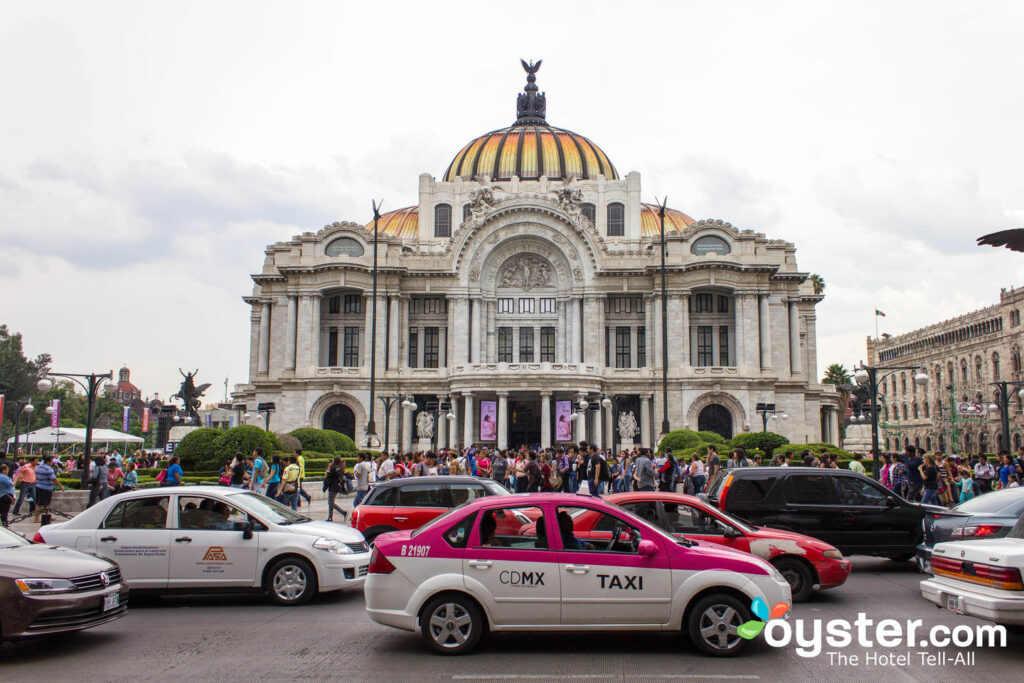
After spending your first day touring Mexico City’s polished side, it’s time to join the more energetic fray. Mexico City’s Centro Historico (locals simply call it the Centro) is about as iconic as a neighborhood gets. This bustling part of town is loaded with atmosphere and is a vibrant balance of old and new. The neighborhood’s historic cafes include Cafe El Popular, El Cardenal, or Cafe de Tacuba. Take our word and pick one of them for breakfast, but be prepared to wait, as these are some of the city’s most storied institutions.
Start your sightseeing in the Zocalo, Mexico City’s massive main square. It’s ringed by some of the city’s most famous colonial-era sights, including the Palacio Nacional and the Metropolitan Cathedral — the largest of its kind in the Americas. If you feel like exploring, wander the streets to the north and east of the Zocalo, which are packed with a dizzying array of wholesale vendors, lots of small cantinas, and street food vendors slinging traditional delights like elote (grilled corn).
You’ll need to budget plenty of time for the neighborhood’s must-see museums as well, which include cool local exhibits at the Museo de la Ciudad de Mexico. From there, head west along Avenida Madero, passing all manner of rooftop restaurants and stores along the way (it’s a pedestrianized street that’s fantastic for people-watching). At the end of Madero, turn right to set your sights on the stunning Palacio de Bellas Artes, which is home to Diego Rivera’s famous murals plus nightly performances and rotating exhibitions. If you still have time, the Museum of Memory and Tolerance is a gut punch that covers human rights issues and genocide across modern history.
Dinner at the Centro Cultural de Espana en Mexico — while not Mexican — is certainly spectacular, as its terrace has amazing views onto the cathedral. Afterward, head to one of the city’s most iconic dessert spots, Churrería El Moro. Lines can be long to score a table here, but the spiced-and-sugared churros plus steaming cups of hot chocolate are the stuff of dreams. Want a pro tip? Stop by Pasteleria Ideal to pick up a bag of Mexican pastries for breakfast tomorrow morning (it’s going to be an early one).
Day 3: Check Out the Mysterious Pyramids of Teotihuacan

When Spain and the Catholic Church embarked on their rampage through the native Aztec regions around Mexico City, little was left standing. In fact, aside from the badly wrecked ruins of the Templo Mayor, to the north of the Zocalo, there’s little left of the city’s former ancient majesty. For that, you’ll need to take a day trip — and should start it early.
Before you embark, though, let’s clear some things up. The massive pyramids of Teotihuacan were not built by the Aztecs. In fact, according to researchers, the site had already been long abandoned by the time they arrived. It was once the largest city in the Americas, and even today, there’s no single explanation for who, how, or why these temples were constructed. What we can tell you is that the stunningly preserved structures are one of Mexico’s most impressive ancient sights, and well worth the trip.
You can find chartered day trips on Viator that will take care of transportation and entry tickets, and while they aren’t expensive, they can be pricier than DIY options. For those with a sense of adventure, hop on one of the buses that depart from Terminal Autobuses del Norte, which is connected to the city’s metro system. Round-rip bus tickets cost less than $4 and it’s an hour-long ride to the pyramids.
Once inside the compound, be prepared to walk and climb — and also come armed with sunscreen, as there’s almost zero shade to be found. Gird yourself for the steep climb up the Temple of the Sun (the largest) and Temple of the Moon, and you’ll be rewarded with amazing vistas across these sacred grounds. For food, there are a few casual restaurants just outside of the gates, and more to be found in the town of San Juan Teotihuacan. Keep in mind that the site is free for Mexican citizens on Sundays, meaning crowds typically spike as domestic tourists and locals flock here to spend the day sightseeing.
Day 4: Commune With Frida Kahlo and Eat Like a Local in Coyoacan

It’s not in the city center, but there’s no excuse for passing over a visit to Coyoacan. There are many ways to get here, including the city bus and metro system, though Uber will be the most direct option. Don’t be put off by the touristy main drags and “craft” markets, either — there’s plenty of charm to be found here. However, Coyoacan is perhaps most famous as the former home of one of Mexico City’s most beloved artists: Frida Kahlo.
Today, The Blue House (formally known as the Frida Kahlo Museum) is a compact and fascinating glimpse into Frida’s life and work, alongside her frequently tumultuous relationship with Diego and the wider role they played in Mexican politics, art, and culture. Be sure to get your tickets online in advance (and the photography supplement if you want to take pictures inside of the galleries), as the line for entry tickets on same-day visits can be a beast.
Save plenty of room in your stomach for a visit to this neighborhood’s massive market as well. It’s a two-block walk south of the Frida Kahlo Museum, and the roads surrounding the market itself are lined with vendors selling everything from tlacoyos to tacos. Inside, though, there are even more dining options, as a seemingly limitless number of stalls sell burritos, huaraches, sopes, and other Mexican specialties. The market also has tightly packed rows of souvenir sellers offering everything from calaveras (the famous Day of the Dead skeletons and skulls) to milagros (small metal ornaments) and icons of La Virgencita.
Coyoacan is home to other noteworthy destinations if you have time to spare. The humble Leon Trotsky Museum tells the story of this famous Marxist, who was assassinated in the house that now shelters his museum. For some background on Mexico’s many indigenous communities, head to the Museo Nacional de Culturas Populares. Parroquia San Juan Bautista, a 16th-century church, makes for fine photographs, and Coyoacan’s leafy plaza is a great place to sip a coffee. Hit up tiny Cafe Avellaneda, a popular local hangout, for some of the neighborhood’s best brews.
Day 5: Stroll Leafy Condesa and Mexico City’s Amazing Parks

After an action-packed few days, you deserve a break, so spend your final day getting in touch with Mexico City’s quieter side. Start your morning with breakfast in Condesa, a peaceful neighborhood that’s bounded by gorgeous parks on three sides. Head to eternally buzzing Maque or El Ocho for breakfast. Both have outdoor seating, and the former doles out some excellent pastries to get your appetite going before tucking into an array of Mexican classics or lighter fare. For something a bit homier, but no less delicious, breakfasts at La Ki-K on Calle Fernando Montes de Oca are hard to top as well.
After you’ve gotten your fill, head east and then north through Parque Mexico. It’s a gorgeously landscaped green space that will likely be packed with families and couples enjoying the city’s eternally spring-like weather. If you’re feeling ambitious, loop back west through Parque Espana, navigating the increasingly busy streets toward the Bosque de Chapultepec — Mexico City’s Central Park. You can also reach the park via a cheap and quick cab ride from Condesa. There are tons of pathways meandering through the park, along with equally numerous monuments, and the striking Castillo de Chapultepec, an 18th-century castle that has been home to everyone from emperors to presidents. Views of the city from the castle are stunning. Lunch will be cheap, as there are countless street-food vendors throughout the park.
To the north of the park is arguably the city’s most famous museum, the National Museum of Anthropology. It’s the largest museum in all of Mexico, and the collection holds everything from pre-Colombian relics to demonstrations of contemporary indigenous life in Mexico.
For dinner, head back to Condesa and hit up one of the trendy eateries along Calle Amsterdam, like Ojo de Agua or Rojo Bistrot. There are also great dining spots along Avenida Tamaulipas, Fernando Montes de Oca, and Avenida Michoacan. If you really want to make a splash on your last night in town, reserve a table months in advance at Pujol, in the high-end Polanco neighborhood. It’s the city’s most storied and buzzed-about dining spot, though prices might just make your eyes water.
If You Have Two More Days
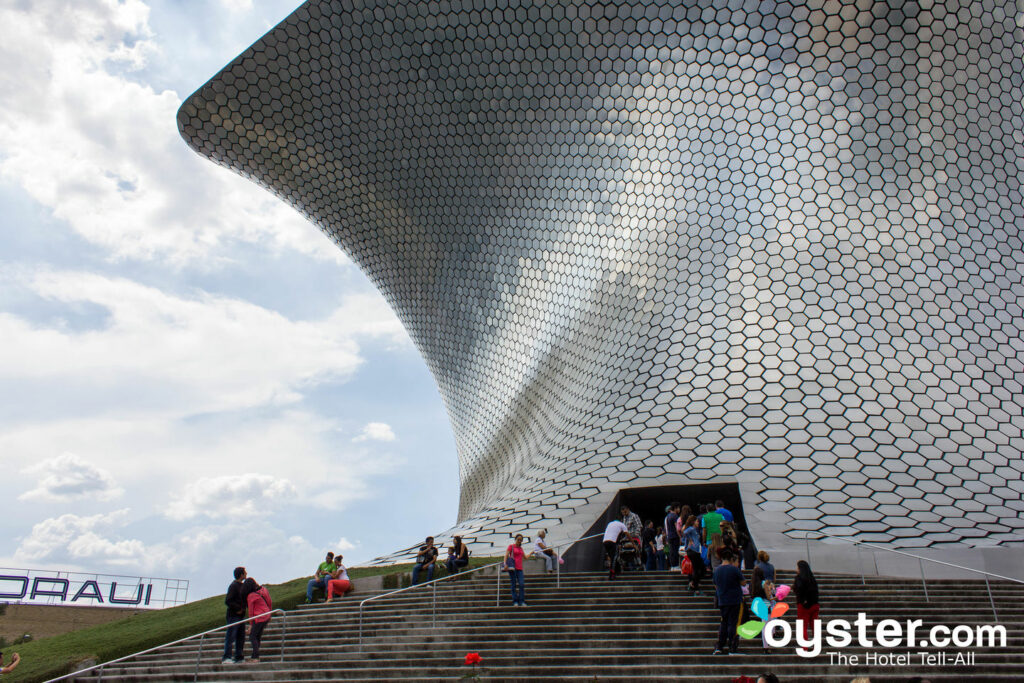
The answer for how long you should spend in Mexico City will vary depending on who you talk to. Some say a long weekend is sufficient, while others think a month is not close to enough time. However, with a full week, you have a lot more flexibility to enjoy the city at a slightly less frenetic pace. We would especially suggest a longer itinerary if you’re in town for any of the festivals or art fairs, particularly Zona Maco and Material, which occur simultaneously in the winter and will take up at least two days of your schedule.
If you have a sixth day, devote it to Polanco, one of the city’s most exclusive neighborhoods. It’s home to upscale nightclubs, luxury hotels, tony condos, high-end malls, and one-of-a-kind boutiques. The district certainly isn’t compact, and strolling one end of Avenida Presidente Masaryk to the other will take quite some time. Most of the boutiques and cafes of interest are in Polanquito, but there is a lot to explore here. In the northwestern corner of Polanco are two of the city’s smaller, but no less important, museums: Coleccion Jumex and Museo Soumaya. The former mounts cutting-edge exhibitions of Mexican and international art, while the latter — housed in a futuristic metal-tile building — is packed with classic art from the colonial and early modern periods. Better yet? Admission to Museo Soumaya is free.
With your seventh day, there are numerous extras you can add to your trip. Check the roster of performances at Palacio de Bellas Artes to see what’s on. The schedule can range from visually stunning Ballet Folklorico de Mexico performances to Mexican classical or modern music. It’s also worth scoping out a lucha libre match. The vinyl masks worn by these athlete-performers are instantly recognizable around the world, and you can catch the fights at venues like Arena Mexico. For something a little less violent, but no more tame, head back to the Centro to scope out the roving bands of mariachi performers in Plaza Garibaldi. While the music blares, snack on all of the Mexican food you’ve ever wanted and shop for souvenirs to take home.
Know Before You Go
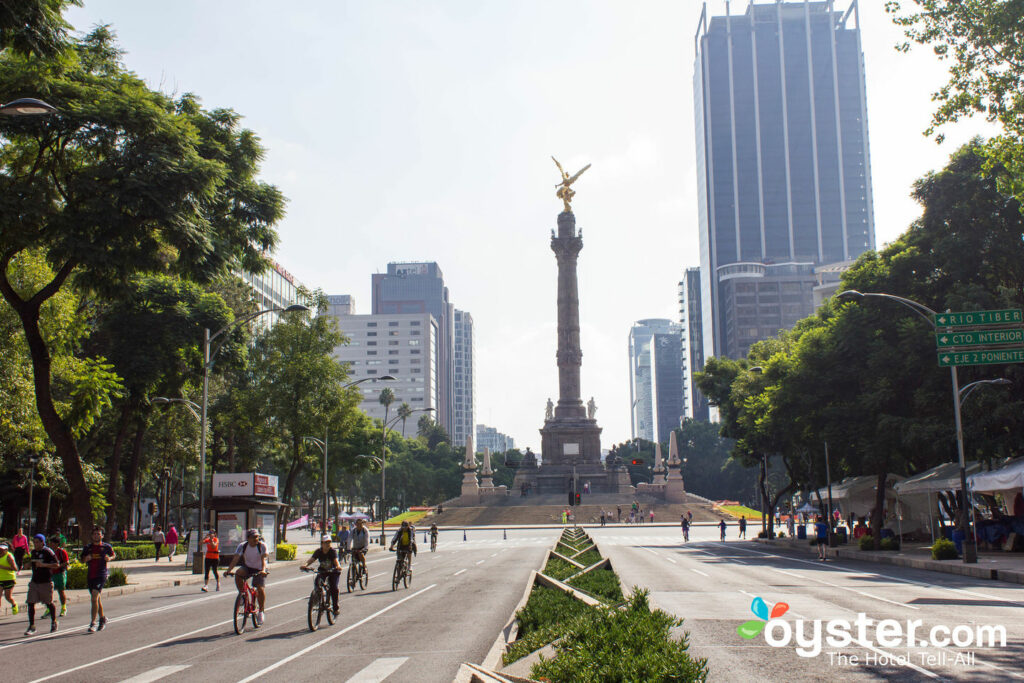
While some airlines do offer substantially discounted fares to Toluca International Airport, most arrivals will touch down at Benito Juarez International Airport. Thanks to airport-wide Wi-Fi, it’s easy enough to arrange for an Uber to pick you up, though plenty of pre-paid taxi stands are set throughout the terminal. You should expect to pay a bit more for the cabs arranged in the terminal to the city center (around $8) versus Uber (as low as $4). Ignore the many cabbies who stand around the exits beckoning you into their cars — they’re likely to rip you off. There aren’t too many overnight flights from the United States to Mexico, meaning that your first day of vacation will likely be taken up by some amount of travel.
It’s also worth noting that while the metro is cheap, clean, and efficient, the distances between stations is vast and you likely won’t be exiting a station right on top of your desired destination (with the exception of sights in the Centro). Mexico City is extremely spread out, meaning that walking times between neighborhoods are long. For instance, it’s approximately 40 minutes on foot from Condesa to either Polanco or Juarez. If you’re crunched for time, opt for an Uber (just beware of traffic).
Many museums offer free days, generally on Sundays, so check ahead if you’re really on a budget. However, keep in mind that crowds on these free days tend to be far bigger.
Hotel Picks

The stunning Tiffany stained-glass ceiling at Gran Hotel Ciudad de Mexico.
If you have the money to spare and want to rub elbows with the city’s fanciest residents, grab a room at Las Alcobas Mexico DF. It’s a chic boutique property right in the heart of Polanco and has on-site gourmet dining. For a more budget-friendly option, the Hotel Casa Gonzalez makes a fine place to sleep. It’s within walking distance of the Zona Rosa, and the 33 rooms have a homey charm to them. To be right in the thick of the Zona Rosa’s bar-and-nightlife scene, check out the contemporary rooms at Room Mate Valentina. Otherwise, the historic Gran Hotel Ciudad de Mexico is worth a look. It’s near the Centro, and its public interiors are opulent, including details like Tiffany stained-glass ceilings.
Now Watch: Oyster’s Tour Through Mexico City
You’ll Also Like:
- A Guide to Food in Mexico City
- Video: Tour Mexico City Like a Local
- The 10 Best Magic Towns in Mexico
- Mexico City Travel Guide
All products are independently selected by our writers and editors. If you buy something through our links, Oyster may earn an affiliate commission.